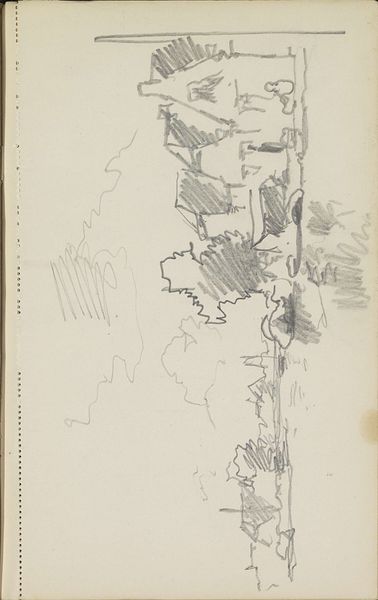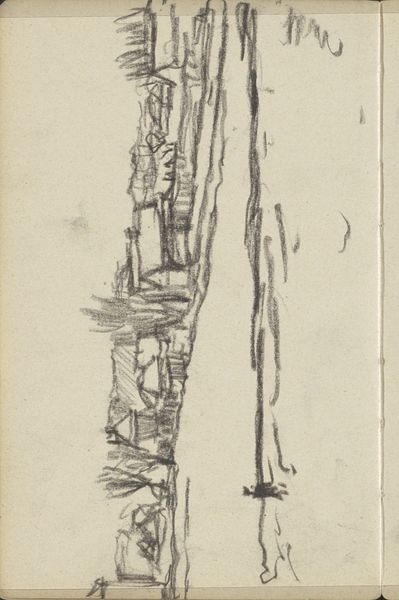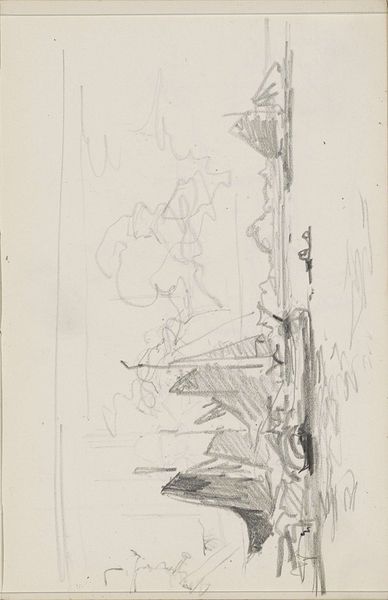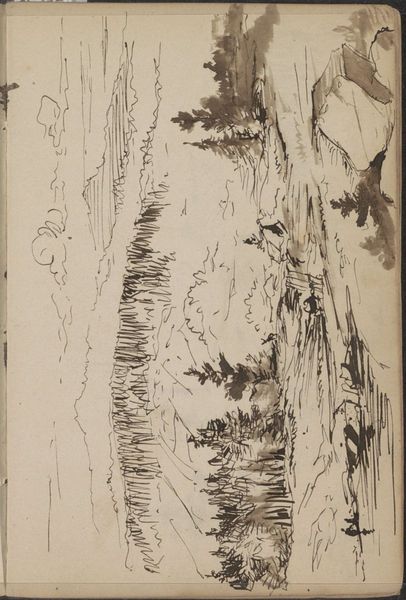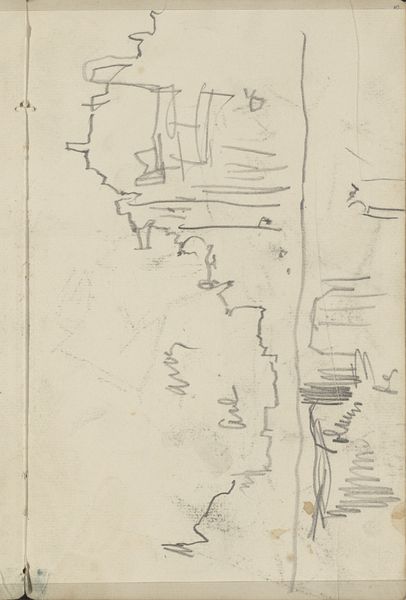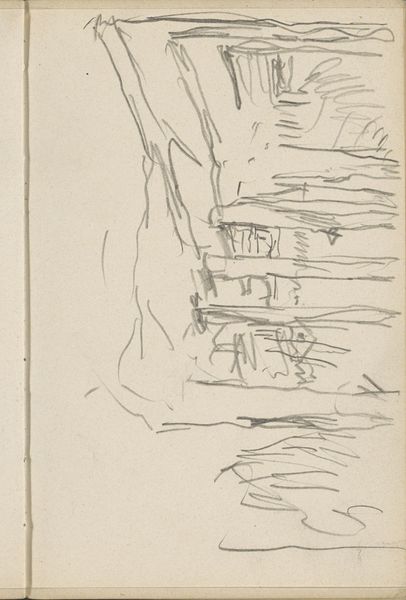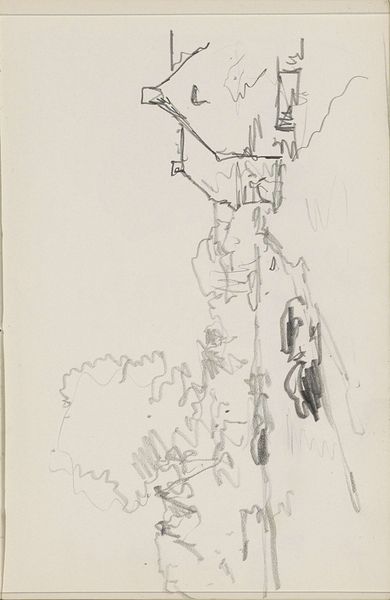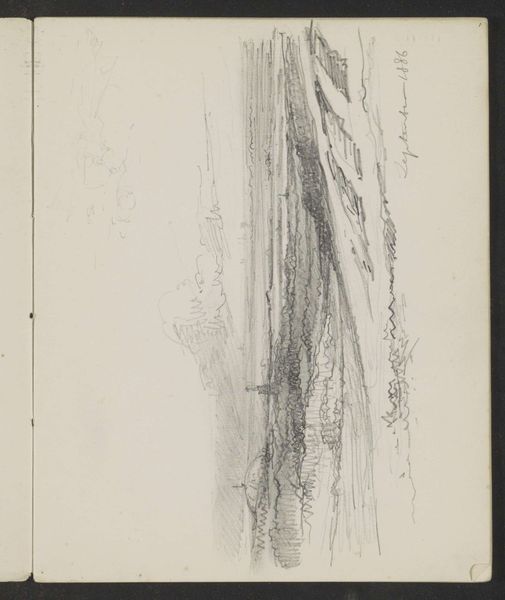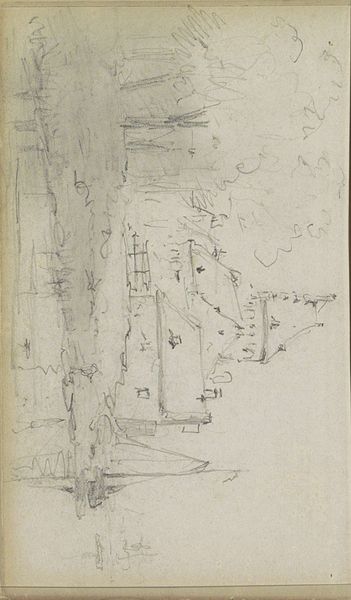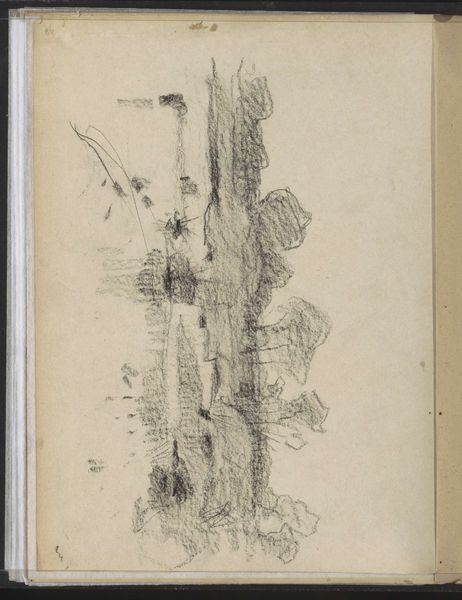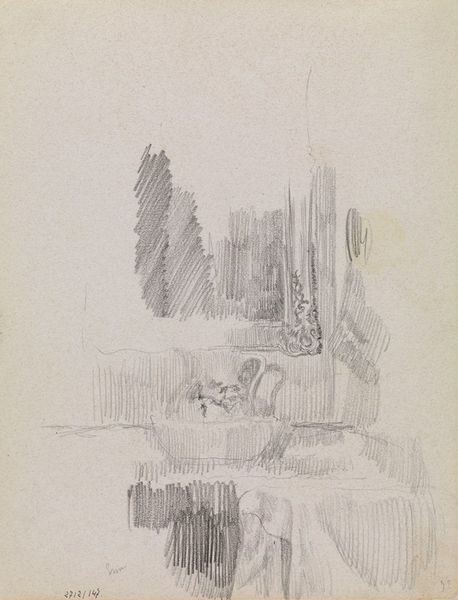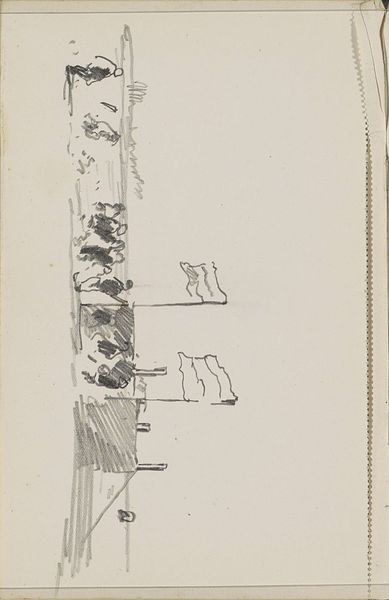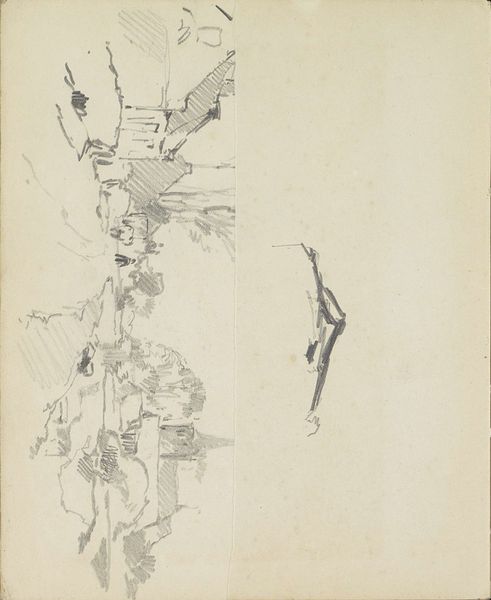
Het Singel, gezien van het Koningsplein naar de Munttoren 1890 - 1946
0:00
0:00
cornelisvreedenburgh
Rijksmuseum
drawing, pencil
#
drawing
#
landscape
#
pencil
#
cityscape
Copyright: Rijks Museum: Open Domain
Editor: This is Cornelis Vreedenburgh's pencil drawing, "Het Singel, gezien van het Koningsplein naar de Munttoren," likely created sometime between 1890 and 1946. It has a fleeting, almost impressionistic feel for a cityscape. What strikes you about this piece? Curator: The immediate impression is one of labor. The density of marks with a common graphite pencil emphasizes the physical act of creation, contrasting starkly with the architectural grandeur it depicts. Consider the social implications: Who had the time, the materials, and therefore, the *access* to depict this cityscape in this manner? Editor: That's interesting; I hadn’t thought of the sheer accessibility of artistic creation that we enjoy now. I suppose I just saw the technique as indicative of… style. Curator: But style isn't divorced from production, is it? Think of the paper itself – what kind is it? Its quality, its availability… these all dictate the end product. And why a drawing? Was painting cost-prohibitive? What social functions does this work serve, who might buy it, or see it, or consume the art itself? Editor: So you’re saying even a sketch is tied to these socioeconomic structures. If the paper was mass-produced or handmade, if Vreedenburgh sketched *en plein air* or from memory…it changes the context entirely. Curator: Precisely! It asks us to think of the artistic practice, of drawing itself, as work; about artistic production in this historical setting, in a specific city, available for consumption. Consider who would have seen, owned or been in the sphere of the artistic output of such drawing practices? Editor: That reframes how I see the whole piece. Thanks! I will never see drawing the same way now. Curator: Good, so perhaps look beyond the surface. Now we both might think of materiality not as an artistic end in itself, but about what it makes possible!
Comments
No comments
Be the first to comment and join the conversation on the ultimate creative platform.
